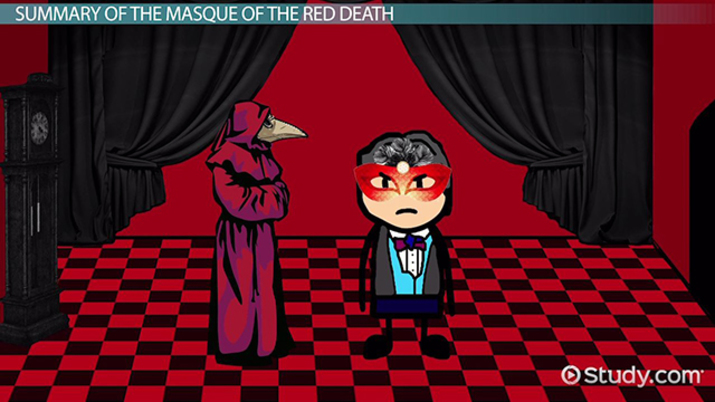

Read Poe's essay "The Philosophy of Composition," in which he outlines his theory of "effect."
THE MASK OF THE RED DEATH MOVIE
Movie or TV ProductionsĪ 1horror classic (with Vincent Price) that takes some rather serious liberties with the plot of the story.Ī remake of the Vincent Price film that stays just as far from the plot of the story as Price's movie. The Poe Museum's website, which contains biographical information, "death theories," and more. The Masque of the Red Death Resources WebsitesĬheck out the wicked cool Poe Society of Baltimore page, with Poe's collected works, a timeline, a bunch of articles, and more. And witness for yourself the mother of all party crashes. Find out why some have called this Poe's own twisted remake of Shakespeare's The Tempest. So read "The Masque of the Red Death," and let yourself discover the fantastic world of Poe and Prospero's madness. In what ways is an artist like a sorcerer? Do art and madness always go together? Is art above morality? What's the relationship between art and death? Those are all questions Poe explores through the surprisingly complex character of Prince Prospero. And if you're into solving puzzles, the story's got enough allusion and symbolism to keep you figuring it out for a good long while.īesides being a horror buff's dream, "Masque of the Red Death" may also have some interesting things to say about art. The language is so grave and dark it practically screams to be read aloud by Christopher Lee. The story's imagery is just as wonderfully weird and dramatic. In only fourteen paragraphs, Poe creates a Gothic wonderland that will give you a serious case of the spine-tinglies and set your imagination all atwitter. What is The Masque of the Red Death About and Why Should I Care?īeing reminded that nobody escapes death just doesn't get any more fun than this. Which happens to be one heck of a nightmare. It's as if Poe is able to pull you right out of reality, into his (or is it Prospero's?) own dream. At the same time, Poe's wildly imaginative setting gives the story a make-believe feel (he did call it a "fantasy," after all) that draws the reader in completely. From the opening line every element of the story feels perfectly designed to create a growing sense of dread. "The Masque of the Red Death" is one of Poe's most brilliant successes on that front. Everything in the story, down to the level of the individual words, is supposed to be carefully selected by the author to bring about the effect. He thought that every work of poetry or short fiction should aim to create a single " effect": one particularly intense feeling, emotion, or experience in the reader. Most intriguing of all, however, is the arrival of a most unfortunate guest…īesides his poems and stories, Poe is also famous for his unique theory of writing. It's the tale of a dreamlike masquerade ball thrown by the half-mad Prince Prospero during the height of a terrible plague. Both qualities are on display in "The Masque of the Red Death," which is among the most colorful and the creepiest of his stories. He also had a mad sense of style and an incredible imagination, which allowed him to paint vivid and unforgettable images with words. (His life, it turns out, was just about as mysterious as some of his stories – check out a biography.) Poe had a talent for writing terrifying and spine-tingly tales: many of his short stories are now considered horror classics. He later published a slightly revised version of the story under the title by which it's known today, "The Masque of the Red Death," in a July 1845 issue of a magazine called the Broadway Journal.Įdgar Allan Poe (who lived from 1809-1849) was a poet, essayist, and short story writer, particularly famous for writing dark, mysterious, and death-centered pieces.

A Fantasy" in the May 1842 issue of Graham's Magazine, a Philadelphia literary magazine for which he served as editor. Poe first published it as "The Mask of the Red Death. " The Masque of the Red Death" is a deliciously creepy and wonderfully bizarre story written by that early American master of Gothic horror, Edgar Allan Poe.


 0 kommentar(er)
0 kommentar(er)
